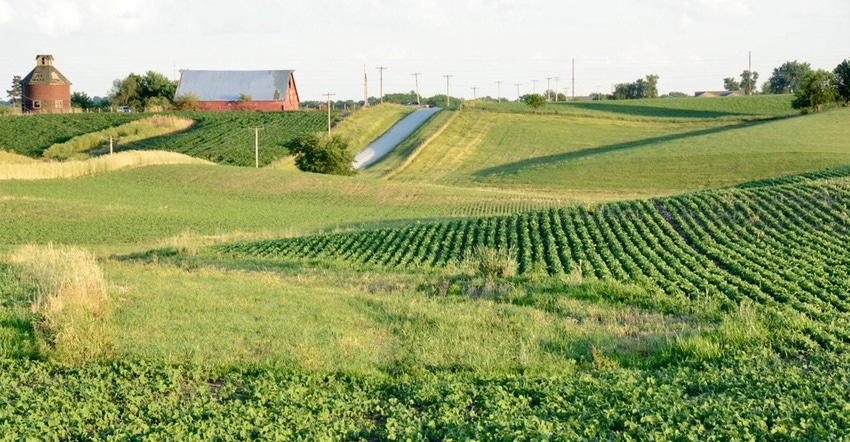June 11, 2018

This growing season has given the Prairie State our typical unpredictable weather — an oxymoron, for sure.
I happened to get caught in one of those downbursts while traveling recently in southern Illinois. I witnessed a flood of sediment-laden runoff jump out of the ditch and leave a plume of topsoil across the road that was substantial enough to require a blade to scrape it off. A small group of people gathered to watch the others work and talked about what needs to be done to fix the world.
Then I heard a comment I’ve heard several times before: “No-till actually causes gullies.” There were even a few nods of agreement before my furrowed brow signaled they were in for a lesson.
We all know that gullies form when water concentrates along natural undulations of the land (or sometimes unnatural ones, like in between crop rows or along travel lanes). Water is heavy. Energy from that moving water is strong enough to remove any residue from the surface, break soil particles away from each other and carry them out of the field.
Once it creates a channel, water will just keep following the path of least resistance, removing even more soil along that path — and that’s the birth of a gully. At the Natural Resources Conservation Service, when these gullies are young and still crossable, we refer to them as ephemeral (temporary) gullies.
Over time, depending on how many rainfall events concentrate runoff in those areas, these gullies can erode so much that you cannot safely cross them with conventional equipment. We refer to that advanced stage as a classic gully.
What’s really happening
Here’s where the literal rub comes in with regard to no-till. If you use a conventional-tillage system, you are constantly dragging more soil into the ephemeral gully channels. The tillage just smooths the edges of the gully and fills the void, making that erosion problem less apparent.
Runoff water still gathers in those subtle channels with each subsequent rainfall event. And more precious topsoil washes away — oftentimes even more than before, because the soil that is dragged in is loose. Over time, you end up losing even more soil from these places, but you might not notice it because the gully is obliterated with each tillage pass. Because you aren’t making those passes when you use a no-till system, you could indeed see classic gullies form faster than if you are in a conventionally tilled field.
But remember, gully erosion is just one type of erosion. True, it’s one of the most visible forms of erosion, but it’s the almost imperceptible sheet and rill erosion that is calculated with NRCS erosion prediction tools. Sheet and rill erosion is also the type of erosion we use as the basis for highly erodible land (HEL) determinations.
Don’t think that bringing out the tillage implements is the answer to stopping erosion. Keeping the soil covered is still the best thing to do.
So, how do you deal with those ephemeral gullies that appear in conservation-tillage fields? That’s where conservation practices like grassed waterways, water and sediment control basins, terraces, and contouring can help. If you have ephemeral erosion, you probably need these practices on your conventionally tilled fields, too.
Just remember, our goal is to keep that soil and everything that might be attached to it (nutrients and pesticides) in place so it doesn’t go somewhere else and cause a problem.
Erasing a problem from view doesn’t make it go away.
Note: Last month’s column, “What’s in a name?” incorrectly stated that SCS became NRCS in 1996; that change occurred in 1994. Thanks to the sharp-eyed people who pointed out the error.
Dozier is the Illinois state conservationist. Direct comments or questions to [email protected].
About the Author(s)
You May Also Like




